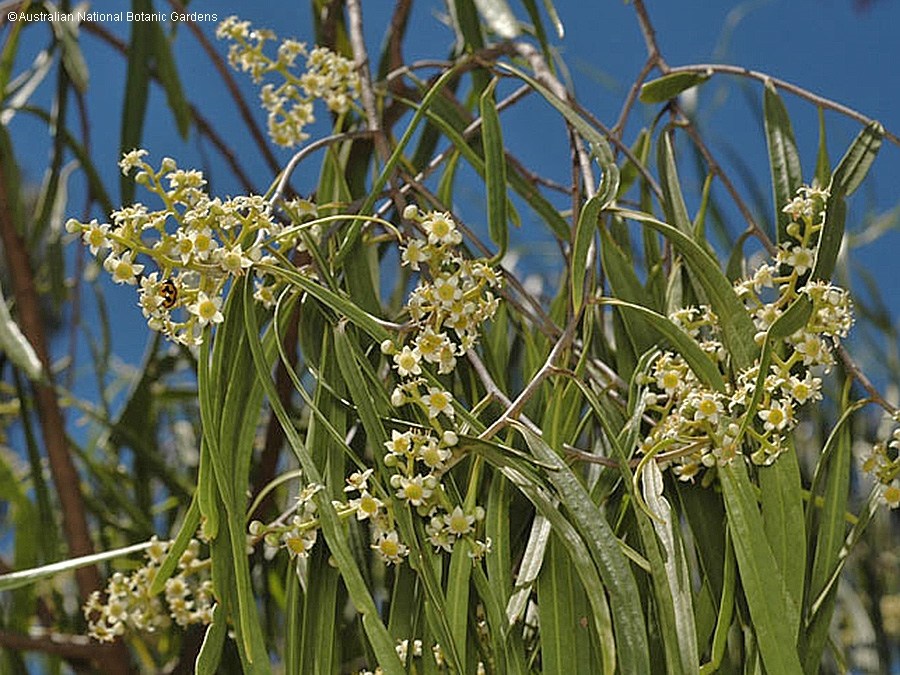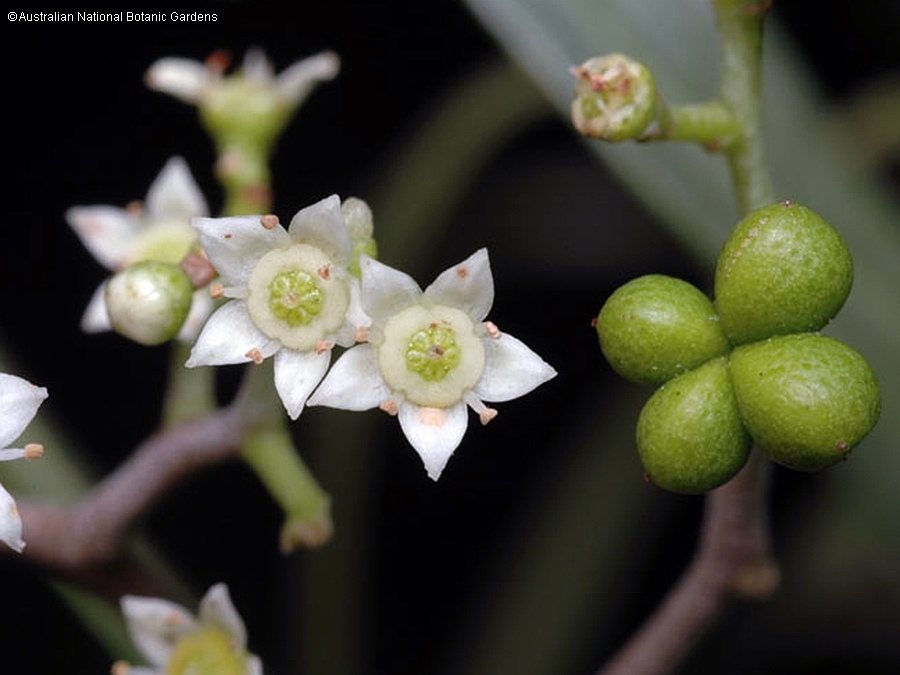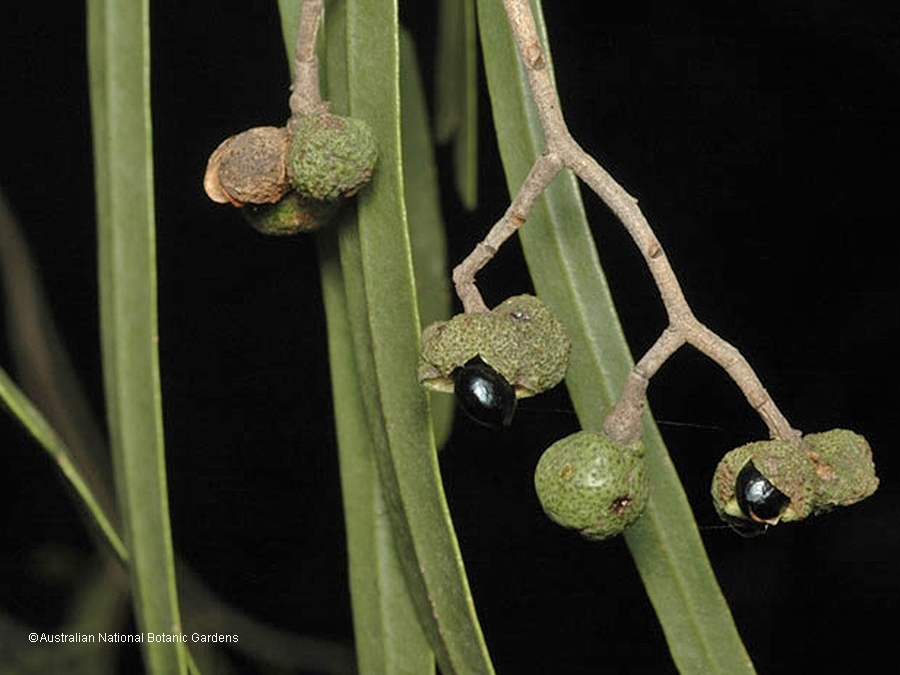Australian Tropical Rainforest Plants - Online edition
Geijera parviflora Lindl.





Lindley, J. in Mitchell, T.L. (1848), Journal of an Expedition into the Interior of Tropical Australia: 102. Type: "not cited."
Wilga
Shrub or tree to 10 m high. Young stems hairless. Bark grey to dark grey.
Leaves alternate, simple. Stipules absent. Petioles with a broad shallow channel above, 0.15-1.2 cm long. Leaf blades linear, 3.5-25 cm long, 0.3-1.4 cm wide, base attenuate, margins entire, leaf apex acute or subulate. Both leaf surfaces hairless. Lateral veins obscure. Oil dots visible under magnification; leaves weeping or pendulous with a strong spicy scent when crushed.
Inflorescences terminal and in upper axils, paniculate. Flowers bisexual, 5-merous (occasionally 4-merous), white to cream. Sepals 4 or 5, c. 1 mm long, glabrous or ciliolate, connate at base only. Petals 4 or 5, 1.5-2 mm long, glabrous, free. Stamens 4 or 5, anther filaments attached outside the disk. Carpels 4 or 5, free for most part, basally fused, ovaries superior. Disk yellow or yellow-green, comparatively large and enclosing at least the lower half of the ovary.
Fruit a dry follicle, usually solitary or paired (or occasionally in clusters of 3-5). Follicles fused basally, globose, 4-5 mm long, green to brown. Surface of the fruit glandular-rugose because of large oil glands below the epidermis. Seeds 1 per follicle, seed coat black and shiny, with seeds remaining attached to follicle after dehiscence.
Features not available.
Occurs in the inlands parts of CEQ, widely distributed inland of the Great Dividing Range from a latitude west of Mackay north Qld, to the Victorian border and west to SE South Australia. Although collected in vine thickets within this region it is more common in woodland and open forest in NSW and Qld.





